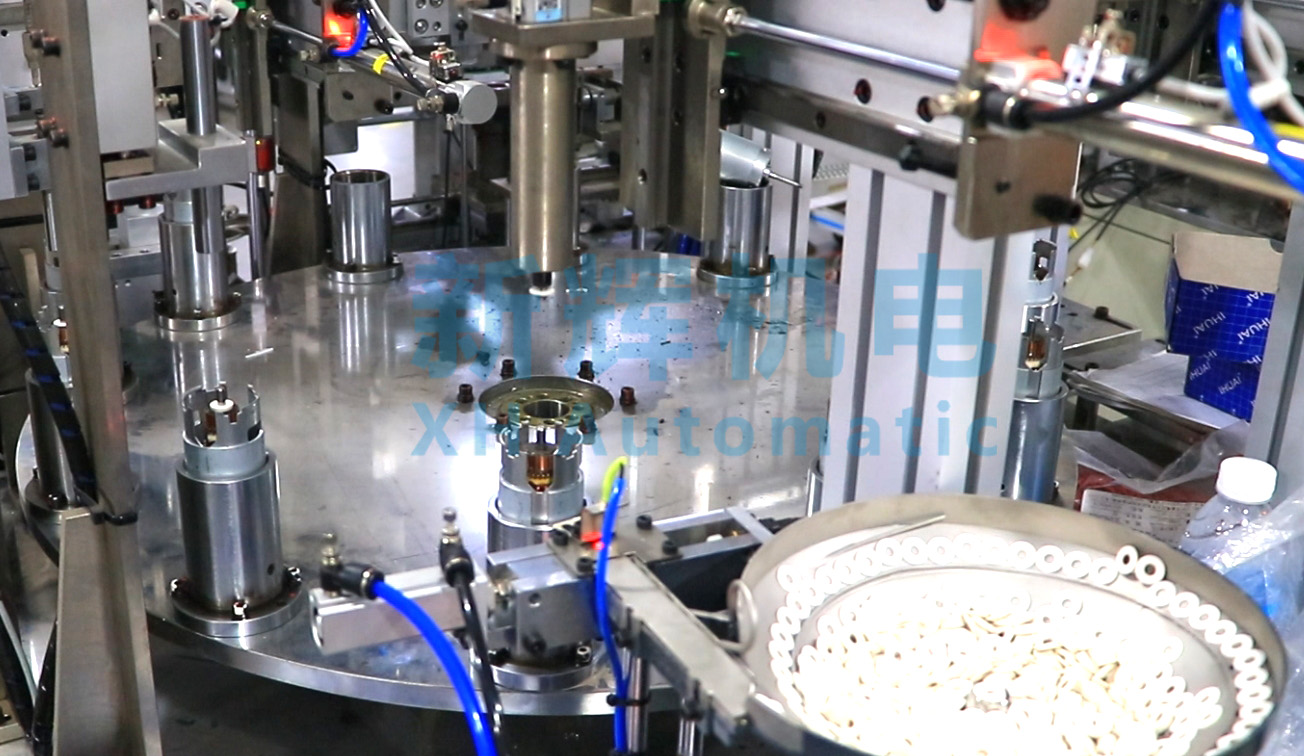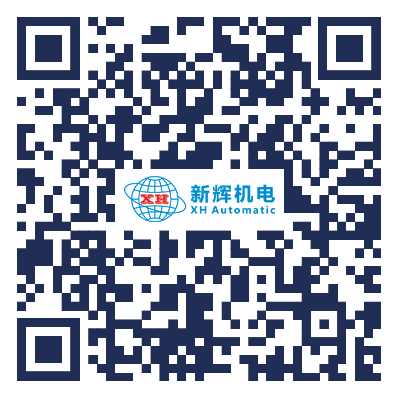What is the content of pre-service training for employees of motor motor rotor automatic meshing machine?
Motor motor rotor automatic meshing machine employee pre-service training content:
I. Equipment basics
l equipment overview
Introduce the basic concepts, functions and importance of motor motor rotor automatic meson machine in the motor manufacturing process. Let employees understand that this equipment is a key piece of equipment specifically designed to install mesons on motor rotors to ensure stable motor performance.
Demonstrate the overall appearance and structure of the equipment, including the location and general function of each major component (e.g., rotor transfer device, meson mounting mechanism, control system, etc.), so that employees have a preliminary overall understanding of the equipment.
l Working Principle Explanation
Explain in detail the working principle of the equipment. For example, explain how the rotor is accurately positioned to the dielectric mounting position through the conveyor system, how the dielectric mounting mechanism (e.g., press-fit or spin-fit) fixes the dielectrics on the rotor, and how the control system coordinates the actions of each part to complete the entire dielectric mounting process.
Combined with simple diagrams or animations to help employees better understand the mechanical movement of the equipment and electrical control logic, including how the sensor detects signals, how the controller processes the signals and sends commands.
Second, operation skills training
l Introduction to the operating interface
Detailed explanation of the equipment's operating interface (such as touch screen, control panel, etc.). Including the function of each button, indicator light, parameter display on the display and setting area. For example, demonstrate how to start and stop the equipment through the operation interface, how to set the model parameters of the rotor, the process parameters of the dielectric installation (such as pressure, torque, etc.).
Allow employees to actually operate the operation interface to familiarize themselves with how to carry out basic operations, such as menu navigation, parameter modification and equipment status monitoring, etc. Meanwhile, emphasize the matters that need to be paid attention to during the operation process, such as preventing accidental touching of the emergency stop button.
l Operation process demonstration and practice
The trainer conducts a complete demonstration of the equipment operation process. Starting from rotor loading, including how to correctly place the rotor to ensure that it is in good contact with the conveyor device, to the main points of operation in the process of meson installation (such as the correct alignment of the head of the installation tool, the main points of observation during the installation process), and then to the operation of the finished product rotor discharging specifications.
Employees under the guidance of the trainer to practice the actual operation. The trainer observes from the sidelines and corrects the employees' wrong operation in time, such as incorrect hand posture, excessive force, and other operation behaviors that may lead to equipment damage or accidents. Employees need to practice the operation process repeatedly until they master the operation points of each step.
Third, protection knowledge training

l Machinery
Emphasize the mechanical hazardous parts present in the equipment, such as rotating transmission parts (pulleys, gears, etc.), moving fixtures and mounting tool heads. Explain the injuries that may be caused by these parts (e.g., pinching, entanglement, etc.) and require employees to keep their distance during the operation of the equipment.
Train employees in the proper use of guards, such as guard rails and shields provided on equipment. Explain the role and importance of these guards and how to check whether they are firmly installed and working properly. At the same time, teach employees the emergency measures to be taken when guards are damaged or missing, such as stopping equipment operation immediately and reporting.
l Electrical
Explain the basic knowledge of the electrical system of the equipment, including the position of the power switch, the function and internal structure of the electrical control cabinet (e.g. distribution of major electrical components). Make employees aware of the importance of electrical protection, such as the danger of electric shock and the risk of electrical fires.
Train employees on how to operate electrical equipment correctly, e.g. the need to disconnect the power supply and use insulated tools before touching electrical components. At the same time, inform employees of emergency handling methods when encountering electrical faults (e.g. short circuit, leakage, etc.), e.g. using dry powder fire extinguishers to put out electrical fires, cutting off the power supply to the equipment through the emergency stop button, etc.
l Operation Regulations
Hand out and explain in detail the operating procedures manual of the equipment. The contents of the manual include inspection items before starting the equipment (e.g. checking guards, electrical connections, etc.), prohibited behaviors during the operation of the equipment (e.g. reaching into running mechanical parts, adjusting electrical parameters during the operation of the equipment, etc.), and operation specifications after the equipment stops (e.g. cleaning up the work area, turning off the power supply, etc.).
Employees are made to memorize the key points in the operating rules and regulations, and questions, answers and tests are used to ensure that they have a good grasp of the protection knowledge. At the same time, the key points of the operating procedures are posted at the work site so that employees can check them at any time.
Fourth, quality control training
l Quality standard explanation
Introduce the quality standard of motor rotor after installing meson, including the precision requirement of meson installation position (e.g. axial and radial deviation range), the degree of meson fixation (e.g. qualified range of torque or pressure) and so on. Demonstrate the difference between qualified and unqualified products through actual samples or pictures, so that employees can visualize the quality standards.
Explain the importance of quality standards, such as unqualified meson installation may lead to motor performance degradation (e.g. vibration, noise increase, efficiency reduction, etc.), thus affecting the quality and reliability of the entire motor product. Let employees understand that the quality of their work is directly related to product quality and the reputation of the enterprise.
l Quality inspection method training
Train employees how to carry out self-quality inspection during operation. For example, after the meson is installed, how to use simple gauges (e.g. calipers, percentile tables) to check the accuracy of the meson's installation position, and how to check whether the meson is firmly installed by hand feeling or simple tools.
Introduce the process of quality inspection and recording methods. Employees need to learn how to fill out the quality inspection form and record the quality inspection results of each rotor, including information such as inspection time, inspectors, inspection items and inspection results. At the same time, let the staff understand how to report and deal with quality problems if found, such as timely notification of quality management personnel, and unqualified products are labeled and isolated.
V. Equipment maintenance training
l routine maintenance content
Explain the daily maintenance items of the equipment, such as the cleaning of the surface of the equipment (including the body, the operator interface, etc.), the simple inspection of mechanical parts (such as checking whether the screws are loose, the lubrication of the transmission components, etc.) and the basic maintenance of the electrical system (such as checking whether the wires are well connected, whether the sensor surface is clean, etc.).
Train employees in proper cleaning methods and tool use, such as wiping equipment with a clean soft cloth, lubricating mechanical parts with appropriate lubricants, etc. At the same time, clarify the cycle of routine maintenance and the responsible person, such as requiring employees to clean and simply check the equipment at the end of each shift.
l Regular maintenance program introduction
Introduce the regular maintenance items of the equipment, including the in-depth maintenance of mechanical parts (e.g., replacing worn belts and gears, etc.), the full inspection of the electrical system (e.g., calibrating sensors, checking the internal components of the electrical control cabinets, etc.), and updating and backing up the software system (e.g., updating the control software of the equipment, backing up important parameters, etc.).
Let employees know the time interval of regular maintenance and maintenance points, such as equipment running for a certain period of time (such as 1,000 hours) need to carry out a full inspection of mechanical components and replacement of wear parts. At the same time, inform employees that regular maintenance needs to be carried out by professional maintenance personnel, but employees also need to understand the contents of these maintenance programs in order to detect potential problems with the equipment in their daily work and report them in a timely manner.
※ If you need any assistance, please contact the technical specialist of Xinhui Electromechanical Equipment Co., Ltd. through the page chat tool for help.







